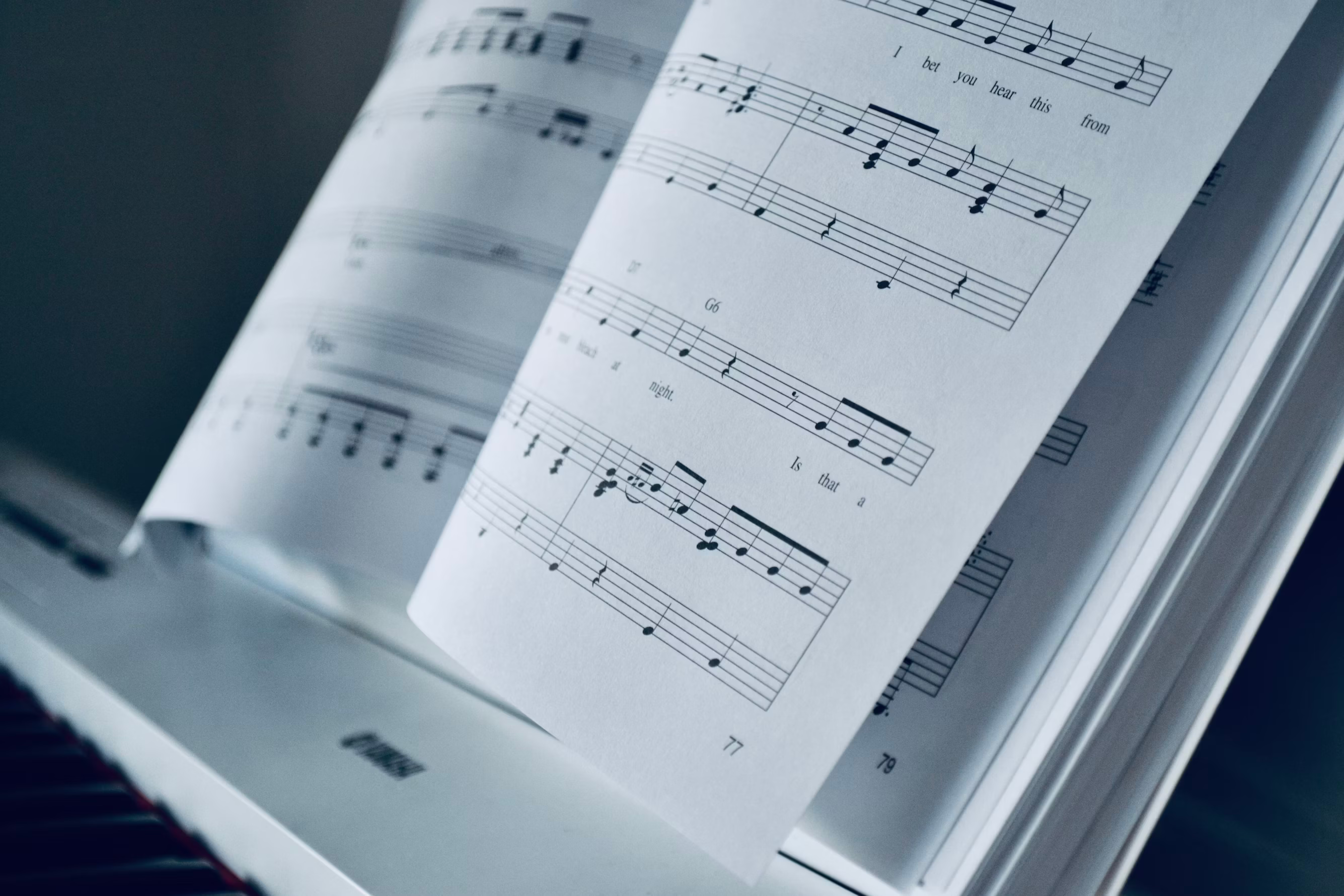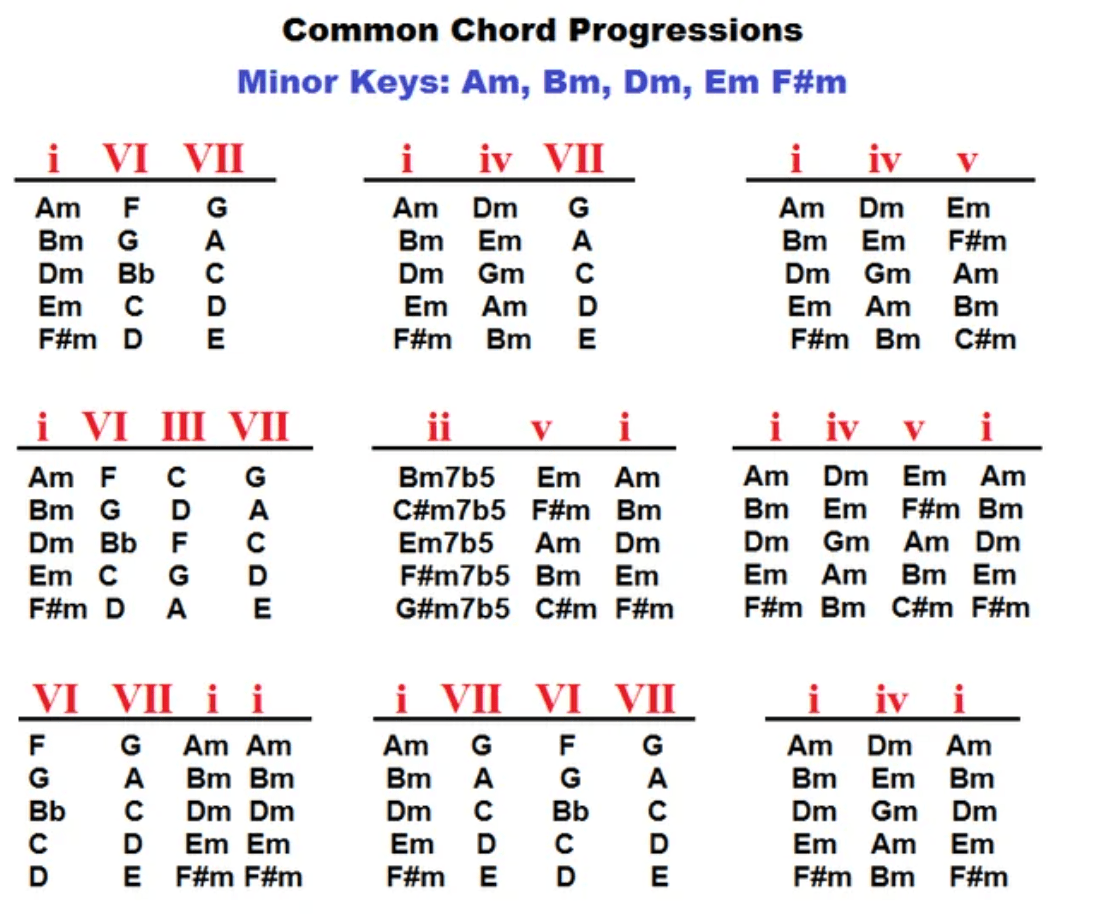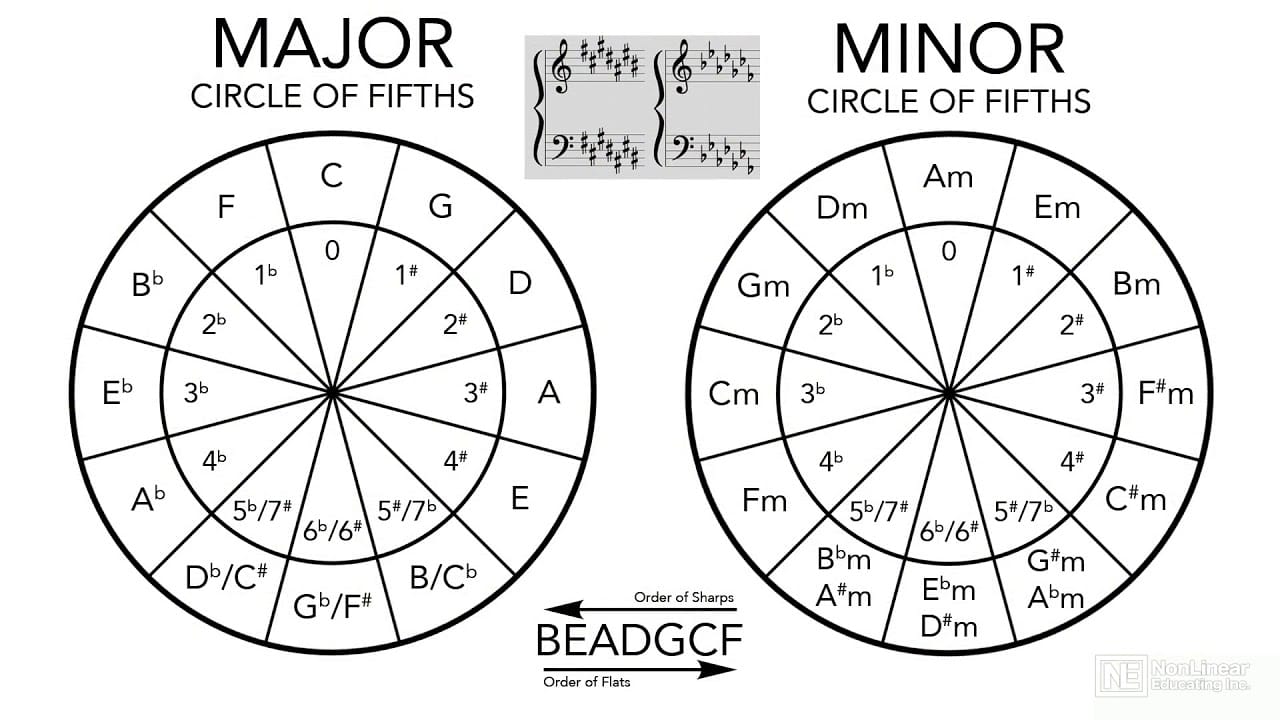Learning music theory is an essential milestone for both aspiring and experienced songwriters. Many songwriters struggle with crafting engaging and innovative music due to a lack of understanding of music structure.
Understanding music theory addresses this common issue by providing the principles and structures that underpin song creation. Many aspiring songwriters struggle with bland or uninspired songs because of a lack of knowledge in structuring melodies, harmonies, and chord progressions.
Music theory is a creative toolbox that equips songwriters with the skills to craft intentional and dynamic compositions. By learning music theory, songwriters can unlock creative potential to produce expressive and well-structured music. Embark on your journey to learn music theory to enhance your songwriting skills.
What Is Music Theory?
Music theory is the study of the principles and structures that underpin music, including scales, chords, rhythm, and melody. It provides a framework for understanding how music works and enables composers to express their ideas effectively. (Source: https://www.iconcollective.edu/basic-music-theory, https://www.avid.com/resource-center/music-theory)
Music theory is essential for both beginners and experienced songwriters to enhance creativity and innovation in their work. Understanding music theory allows songwriters to both understand and creatively bend musical 'rules' to develop their unique style.
This understanding fosters innovation within a structured framework, helping songwriters to craft music that is both intentional and captivating.

Why Learn Music Theory?
Learning music theory helps overcome creative blocks and allows songwriters to write more engaging and compelling songs. Music theory provides tools to craft melodies and harmonies intentionally, resulting in songs that resonate emotionally with listeners. Knowledge of music theory can prevent the creation of uninspired or repetitive songs by providing structure and understanding. (Source: https://improvesongwriting.com/why-is-music-theory-important/)
Creating Intentional Music
Intentional music creation is supported by music theory, as it provides the foundational tools for crafting precise melodies and harmonies. This results in music that can deeply connect with listeners on an emotional level, making the compositions memorable and impactful. [Learn how music and emotions intertwine in our article on Music and Emotions: Unlocking the Science Behind Their Profound Connection]
Many songwriters face the challenge of creating uninspired or repetitive songs. Music theory counteracts this by offering a deep understanding of musical structure and patterns, leading to more dynamic and engaging compositions. [Discover global influences on musical structure in The Global Symphony: Explore Musical Instruments and Sounds From All Seven Continents]
Music Theory for Beginners
Notes are the basic building blocks of music, representing specific pitches. Scales are a sequence of notes ordered by pitch, and understanding major and minor scales is crucial for creating melodies and harmonies. Chords, which are a group of notes played simultaneously, create harmony and support melodies. Rhythm, the timing of musical sounds and silences, gives music its groove and feel.
Tips for Beginners
Begin learning with the major scale and simple triads, which are three-note chords. Practice writing basic chord progressions in one key to understand how chords relate. Use accessible resources such as music theory lessons, online tutorials, and beginner-friendly books.
Key Components of Music Theory
Scales
Scales are an organized sequence of notes that provides the tonal foundation for a piece of music. Major scales are associated with happy or bright sounds, following the step pattern of Whole, Whole, Half, Whole, Whole, Whole, Half. Minor scales have a more somber tone, with their unique step pattern. Modes offer alternative tonalities to both the major and minor scales, extending a songwriter's creative palette. Practicing scales enhances melody creation by providing harmoniously resonant note sequences.
Chord Progressions
Chord progressions are a series of chords played in a sequence that forms the harmonic backbone of a song. They set the mood and emotion of a piece. The I-IV-V-I progression often resolves beautifully, common in numerous genres. The ii-V-I is smooth, making it pivotal in jazz, while the I-V-vi-IV is a forceful emotional pull in pop music. Experimentation with these progressions helps in understanding song structure and developing songwriting skills.
Songwriting Theory
The application of music theory enhances songwriting by utilizing techniques such as modulation (shifting keys), dynamics (altering volume), and phrasing (crafting musical sentences). Using stepwise motion with occasional leaps ensures melodic stability and excitement, while employing tension and release through dissonant and consonant chords can evoke emotion. These techniques aid in creating songs that are expressive and deeply resonate with audiences.
Practical Applications of Music Theory in Songwriting

Enhancing Creativity
Scales and modes can inspire new melodic ideas and help explore different keys and tonalities. Unique chord progressions with uncommon chords like diminished or augmented can add an innovative edge to compositions. Modulation gives a piece surprise and interest by introducing key changes.
Avoiding Repetition
Varying melodic rhythms and note lengths can maintain interest, while chord substitutions provide freshness to common progressions. Altering song structures can also infuse originality, ensuring the listener remains engaged.
Case Study - Adele's "Hello"
Adele's "Hello" demonstrates strong integration of melody, harmony, and rhythm, creating emotional impact through its minor chords and powerful vocal melody. Songs from various genres showcase music theory's principles effectively, offering inspiration for aspiring songwriters.
- Harmony
Key and Diatonic Framework: "Hello" is composed in F minor (four flats: B♭, E♭, A♭, D♭), leveraging the emotional weight of the minor mode. The primary progression in verses and choruses is Fm (i) – A♭ (III) – D♭ (VI) – E♭ (VII). This progression avoids traditional dominant (v: Cm) resolution, creating a cyclical, unresolved tension that mirrors the song’s theme of longing.
Bridge Modulation: The bridge introduces C7 (V7/iv), a secondary dominant resolving to B♭m (iv), briefly heightening tension before returning to the core progression.
Fm (i): Establishes the tonic, grounding the harmony in melancholy.
A♭ (III): A major mediant chord introduces warmth while staying diatonic.
D♭ (VI): Submediant adds a bittersweet contrast.
E♭ (VII): Acts as a subtonic, leading back to Fm without a strong dominant pull.
- Melodic and Vocal Line
Range and Contour: Adele’s melody spans over an octave, ascending from the lower register (F3 in verses) to a climactic F5 in the chorus (“outside”). This soaring contour embodies emotional release.
Chord Tone Emphasis: The verse melody stresses F (tonic) and A♭ (minor third), while the chorus highlights C (fifth) and the upper F (octave), reinforcing harmonic stability.
Non-Chord Tones: Strategic use of appoggiaturas (e.g., the leap to E♭ on “sorry” over Fm) and passing tones adds expressive urgency. The pre-chorus employs a rising sequence (“I must’ve called a thousand times”), creating anticipatory momentum.
- Harmony-Melody Interplay
Suspensions and Delayed Resolution: In the chorus, the word “hello” lands on G (the 9th of Fm), a dissonance that resolves downward to F, enhancing emotional friction.
Modal Mixture: The bridge’s B♭m (iv) borrows from F major’s parallel mode, introducing subtle tonal contrast.
- Rhythmic and Textural Elements
Tempo and Groove: A slow 60 BPM and 6/8 meter evoke a ballad-like sway, with piano arpeggios providing rhythmic propulsion.
Syncopation: Vocal phrases often begin on offbeats (e.g., “Hello, it’s me”), offsetting the piano’s steady triplets for dynamic contrast.
Dynamic Build: Sparse verses (piano/vocals) escalate to choruses with layered strings, drums, and harmonies, amplifying emotional intensity.
- Form and Structure
Verse-Pre-Chorus-Chorus: The song adheres to a pop structure, with a pre-chorus (“There’s such a difference…”) modulating upward melodically to prepare for the chorus.
Bridge: Introduces harmonic novelty (C7–B♭m) before a final chorus repetition, maintaining thematic cohesion.
- Lyrical and Emotional Synergy
The unresolved VII–i progression (E♭–Fm) reflects unresolved regret, while ascending melodies in the chorus (“Hello from the outside”) symbolize reaching out. The repetitive structure mirrors obsessive reflection, a hallmark of the lyrics.
- Instrumentation and Production
The piano anchors the harmony with arpeggiated chords, while strings and subtle percussion enrich the chorus. Adele’s belting technique in higher registers (e.g., “at least I can say that I’ve tried”) amplifies catharsis, supported by stacked vocal harmonies.
- Actionable Tips
Practice music theory concepts regularly to build skill proficiency. Compose short pieces focusing on specific elements like scales. Collaborate with other musicians for new perspectives and ideas.
Music Theory Lessons and Resources
Online Platforms
Pianote offers online piano lessons that cover music theory. YouTube channels like "Music Matters" provide free music theory lessons, helping students at all levels access valuable content.
Books
"The Complete Idiot’s Guide to Music Theory" and "Music Theory for Dummies" are accessible books for structured learning, guiding beginners to advanced concepts in music theory.
Apps and Interactive Tools
Tenuto is an app that provides exercises for practicing scales, chords, and intervals. Websites like Musictheory.net offer lessons and interactive tools to reinforce music theory principles.
Courses
Platforms like Coursera and Udemy host comprehensive courses tailored to various skill levels, providing music theory education for beginners and advanced learners alike.
Conclusion
Learning music theory equips songwriters with a deeper understanding of musical language, enabling them to create more engaging, intentional, and memorable compositions. Music theory provides the foundation necessary to craft compelling music, transforming the songwriting process regardless of experience level. Begin integrating music theory concepts into your compositional practice today, using the resources and actionable tips outlined here to unlock the full potential of your musical creativity.


